Rooftop Solar Installations = Increased Fall Hazard
Changes in the legislation in states like California have made dependence upon solar energy, not only more appealing, but a requirement. California is specifically pushing hard for rooftop solar installations. Rooftop solar installations mean exposure to fall hazards. Fall hazards increase when solar panels are installed for a number of reasons.
Reasons Why Rooftop Solar installations Increase Fall Hazards
- More workers on the roof more often. Solar panels on roofs means that people need to install and maintenance those units. That means that people will be on the roof more frequently in a working scenario.
- Decreased walking area around or near hazards. This is probably the greater danger. When installing solar panels all over the surface of the roof, what was once a clear walking area is now an area that:
- Squeezes people into tighter spaces around things like skylights and roof hatches. Workers have less room to negotiate the hazards making them more dangerous.
- Introduces more trip hazards. With more equipment and power lines on the roof, so increases the trip hazards that are present.
All these factors underscore the necessity of proper fall protection when working on a rooftop solar installation.
Proper Fall Protection Measures for Rooftop Solar Panel Installations
When it comes to fall protection, passive solutions (like guardrails) are always the preferred method. Guardrails and other passive fall protection allows the worker to do their job unhindered by the need of additional equipment and training. A few of the major areas to be covered in a solar installation are:
- Roof Edges What are you using to protect the roof edge? Any equipment that is closer than 15 feet to a roof edge must be protected. These should be protected by a guardrail or the worker should be tied off properly.
- Skylights OSHA considers a skylight a hole! (reference) Most skylights cannot support the weight of a person falling into it. They are brittle and many people have been killed by stepping into one and falling to the floor inside of a building. Skylights should be covered with a screen or surrounded by a railing to ensure proper work safety.
- Roof Hatches Entering and exiting, as well as working around roof hatches call for fall protection measures. The proper grab bars and roof hatch railings should be installed around the roof hatch.
Fall Protection Solutions
We've identified a few hazards associated with rooftop solar installations; now what are the solutions! Below are a few products that we offer that aim to alleviate the fall hazards when working on a rooftop
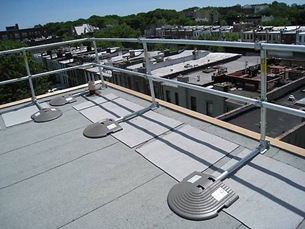
|
KeeGuard Rooftop RailingThis railing is a non-penetrating, counterbalanced solution that can be installed on almost any roof surface. It can be used to protect the roof edge or to protect around skylights or machinery. |
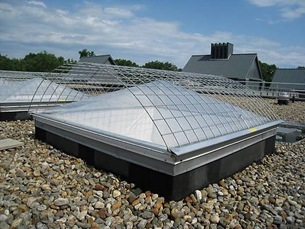
|
Skylight ScreensOur skylight screens are non-penetrating and clip onto the edge of the skylight. California has additional requirements for skylight screens and we also provide screens that meet the CalOSHA requirements. |
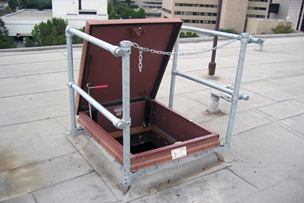
|
Roof Hatch RailingsKee Hatch Roof Hatch railings can be installed by bolting the railing unit to the side of the roof hatch. |
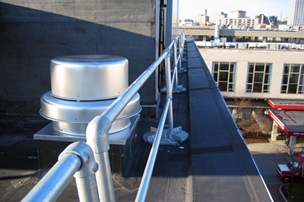
|
KeeGuard Contractor RailingThis is a non-penetrating railing solution that is designed to be more temporary in nature. |
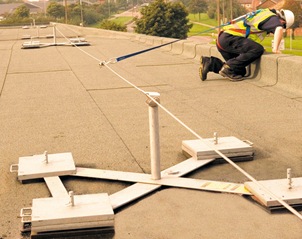
|
Lifeline Fall ArrestAs a last resort you can use lifelines to protect employees who are working on a rooftop. |
Contact Us, We can Help!
Our sales team can give you expert advice on what products to use in each fall protection scenario. Give us a call or drop us an email with your questions and well respond promptly.
_thumb.jpg)

